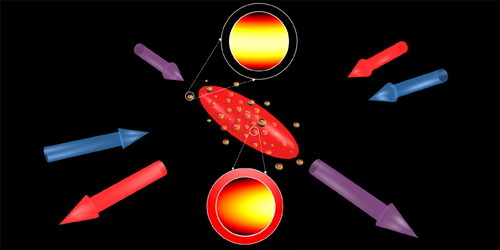A Shared Quantum Rhythm
Systems that exhibit synchronization are ubiquitous in nature, from swarms of fireflies flashing in unison to pendulum clocks ticking together when hung from a shared beam. Now for the first time, researchers have observed the phenomenon at the quantum level. Their method of making quantum states pulse to a shared rhythm could, they say, be leveraged to synchronize remote nodes in a quantum communication network.
Quantum states are wave-like in nature and so have an inherent phase. The key to synchronization is to establish a fixed relationship among these phases. In 2018, researchers mathematically showed that the simplest system in which this could be achieved is one with three energy levels (see Viewpoint: No Synchronization for Qubits).
To test this idea, Arif Laskar of the Indian Institute of Technology in Kanpur and colleagues set up about a million rubidium atoms in the middle state of three hyperfine states with no particular phase relationship. They then fired a light pulse at the atoms, which stored the pulse in a superposition of these states. Upon retrieving the stored pulse, the researchers observed interference fringes that indicated that the phases of the atoms’ hyperfine states had synchronized.
It’s unclear if the atoms influenced each other or responded individually, but the researchers say they were not simply forced by a periodic external impetus. Rather, the effect is similar to fireflies keeping time with a flashing LED or a pendulum matching a gentle tap on a wall. They also note that, contrary to intuition, engineered quantum decoherence somehow helped the synchronization. From here, they would like to look for collective effects, much like a swarm of synchronized fireflies generates new emergent patterns.
This research is published in Physical Review Letters.
–Christopher Crockett
Christopher Crockett is a freelance writer based in Arlington, Virginia.




